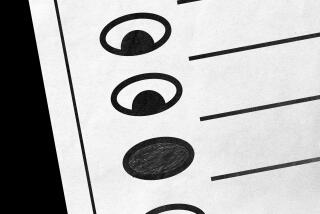Jobless Rate 7.3%; Employment Rises to Record Levels
WASHINGTON — The nation’s unemployment rate increased slightly to 7.3% in January, the highest since August, even while total employment continued to climb to record levels, the Labor Department reported Friday.
The increase in joblessness was caused by an unexpected surge in the labor force--the second in two months--rather than any slump in the economy, Janet L. Norwood, commissioner of the department’s Bureau of Labor Statistics, assured Congress’ Joint Economic Committee. The labor force includes those actively looking for work as well as those already employed.
About 293,000 more persons were out of work last month than in December, bringing total unemployment to 8.5 million, the department reported. Most of the increase came from women, many of whom were laid off at the end of the Christmas season, Norwood said.
“Typically, the female labor force declines from December to January,” she said. “This year, however, their number held steady,” apparently indicating that the women chose to remain in the labor force by seeking other jobs. Of the 2.5 million new people in the labor force over the last year, she said, 70% were adult women.
According to the Labor Department’s monthly survey of 60,000 households, total employment across the nation rose to another new high, improving by 117,000 to 108.1 million. And using the department’s survey of 200,000 business establishments--regarded by some economists as more accurate than the household tally--the number of jobs added to payrolls increased strongly, by 350,000.
At the White House, spokesman Larry Speakes dismissed the overall increase in joblessness as “end-of-the-year volatility” and reasserted the Reagan Administration’s economic optimism. “We know the economy is strong and growing and will continue to create jobs in 1985,” Speakes said.
On the whole, private economists tended to agree with the Administration’s assessment, although Democratic members of the joint committee did not. Sen. William Proxmire (D-Wis.) warned: “We’re starting out (the year) with some very disquieting and disturbing figures.” And Rep. David R. Obey (D-Wis.) declared himself disturbed that “this far into a recovery, a huge number of people have fallen through the cracks.”
Last month’s total unemployment rate--which includes members of the armed forces--was the highest since August’s 7.4% and stood 0.2 percentage points above December’s 7.1%. Excluding members of the armed forces, the jobless figure for January was 7.4%, the highest since September. In California, civilian unemployment was 7.3%, up slightly from 7.1% in December.
Narrow Range
Since early summer, unemployment statistics have drifted up and down within a narrow range between 7% and 7.4%, a pattern typical of a relatively mature economic recovery, Labor Department analysts pointed out. In some business cycles, the jobless rate has fallen sharply after such periods of indecision--but at other times, a new recession has sent the unemployment rate soaring.
However, private economists seem confident that no recession is looming now. “I regard these unemployment statistics as irrelevant as an indication of how the economy is doing,” said Allen Sinai, chief economist at Shearson Lehman/American Express. Indeed, January’s unusual rise in the labor force “points to sustained growth,” Sinai asserted.
Robert Gough, senior vice president of Data Resources Inc. of Lexington, Mass., added: “The important thing is that total employment grew. You get concerned when the number of jobs falls.”
Except for an increase in unemployment among women from 6.4% to 6.8%, there were no significant changes in any of the major components of January’s jobless statistics. Overall black unemployment fell 0.1 percentage points to 14.9%, and joblessness among black teen-agers--perennially the group with the highest rate--was unchanged at 42.1%. Overall teen-age unemployment rose 0.1 percentage point to 18.9%, and joblessness among Latinos rose 0.2 points to 10.6%.
More to Read
Get the L.A. Times Politics newsletter
Deeply reported insights into legislation, politics and policy from Sacramento, Washington and beyond. In your inbox three times per week.
You may occasionally receive promotional content from the Los Angeles Times.










